10 March 2025
Knee injuries are, unfortunately, one of the most common issues athletes face. Whether you're an elite player, a weekend warrior, or just someone who enjoys a casual jog, your knees take a lot of the load. In fact, the knee is one of the most complex and vulnerable joints in the body. Given how much we rely on our knees, it's no wonder they’re often the first to give out during physical activities.
But how do you know if that twinge in your knee is something serious? What’s the best way to treat it? And, more importantly, how can you prevent knee injuries in the first place? In this article, we’ll dive deep into the types of knee injuries common in sports, how to diagnose them, effective treatments, and ways to keep your knees in tip-top shape.

Common Types of Knee Injuries in Sports
Sports-related knee injuries can range from mild to severe, and they often occur due to sudden twists, turns, or impacts. Here are some of the most common types you should know:1. Anterior Cruciate Ligament (ACL) Tear
The ACL is a major ligament that stabilizes your knee. It’s often injured during sports that require quick changes in direction, like basketball, soccer, or skiing. If you hear a "pop" in your knee followed by instability or pain, you might have torn your ACL.2. Meniscus Tear
The meniscus is the cartilage that cushions your knee joint. Think of it like a shock absorber. It can tear from twisting or turning too aggressively, especially when your foot is planted, and your knee is bent. This injury is common in contact sports like football or rugby.3. Patellar Tendinitis (Jumper’s Knee)
If you're into sports that involve a lot of running or jumping (think basketball or volleyball), patellar tendinitis might be something you’ve experienced. This injury happens when the tendon connecting your kneecap to your shinbone becomes inflamed due to overuse.4. Posterior Cruciate Ligament (PCL) Injury
PCL injuries are less common than ACL tears but can still happen, usually due to a direct blow to the front of the knee. For example, in football, when a player falls onto a bent knee or during a car accident, when the knee hits the dashboard.5. Dislocated Kneecap (Patellar Dislocation)
A kneecap dislocation happens when the patella (kneecap) slips out of its normal position, often due to a sudden change in direction or an awkward movement. It's painful and can make your knee look visibly out of place.6. Iliotibial Band Syndrome (ITBS)
If you’re a runner, you might be familiar with iliotibial band syndrome. The IT band runs along the outside of your thigh, from your hip to your knee. When it gets too tight, it can rub against the knee and cause pain, especially during repetitive motions like running.
How Knee Injuries Are Diagnosed
So, you’ve felt that sharp pain in your knee, and it’s not going away. What now? The first step is to get a proper diagnosis. There are several methods doctors use to figure out what’s going on with your knee.1. Physical Examination
Your doctor will likely start by asking about your symptoms and how the injury happened. They’ll then physically examine your knee by feeling for swelling, tenderness, or instability. They might ask you to walk or perform certain movements to assess the range of motion.2. Imaging Tests
If the physical exam doesn’t provide enough information, your doctor may order imaging tests to get a better look at the inside of your knee:- X-rays can show if there's any bone damage or fractures.
- MRI (Magnetic Resonance Imaging) is often the go-to for soft tissue injuries like torn ligaments or cartilage.
- CT Scan can provide a more detailed image of the knee’s bones and joint structure.
3. Arthroscopy
In some cases, doctors may use a minimally invasive procedure called arthroscopy. They insert a tiny camera into your knee to get a direct view of the joint. This is typically done if imaging tests aren't conclusive or if surgery is being considered.
Treatments for Knee Injuries
Once you know what’s wrong with your knee, the next step is figuring out how to treat it. Treatment options vary depending on the severity of the injury, but here’s an overview of the most common approaches:1. Rest and Activity Modification
For minor injuries like mild sprains or overuse conditions, the first line of treatment is often rest. You’ll need to avoid activities that aggravate your knee and give it time to heal. This might mean taking a break from your sport or modifying your training routine.2. Physical Therapy
Physical therapy is a cornerstone of knee injury recovery. A physical therapist can guide you through exercises designed to strengthen the muscles around your knee, improve flexibility, and restore the joint’s range of motion. They can also help you learn proper movement techniques to prevent future injuries.3. Bracing and Support
In some cases, a knee brace can provide the support you need while your knee heals. Braces can help stabilize the joint and reduce the risk of further injury, especially during physical activity.4. Medications
Nonsteroidal anti-inflammatory drugs (NSAIDs) like ibuprofen can help reduce pain and inflammation. If your knee injury is more severe, your doctor might prescribe stronger pain relievers or even give you a corticosteroid injection to reduce swelling.5. Surgery
If you’ve torn a ligament or suffered a severe injury, surgery might be necessary. Common knee surgeries include:- Arthroscopic Surgery: This is a minimally invasive procedure used to repair torn ligaments or remove damaged cartilage.
- ACL Reconstruction: If you’ve torn your ACL, your surgeon might recommend reconstructing it using a graft from another tendon in your body.
- Total Knee Replacement: In extreme cases, like severe arthritis or chronic knee damage, a total knee replacement may be necessary. This involves replacing the damaged joint with an artificial one.

Preventing Knee Injuries in Sports
While you can’t always prevent knee injuries, there are steps you can take to reduce your risk. After all, the best treatment is prevention, right?1. Strengthen Supporting Muscles
One of the best ways to protect your knees is by strengthening the muscles around them, especially the quadriceps, hamstrings, and calves. Strong muscles help stabilize the knee and absorb some of the stress that might otherwise be placed on the joint.2. Improve Flexibility
Tight muscles can put extra strain on your knees. Incorporating stretching exercises into your routine will help keep your muscles flexible and reduce the risk of injury. Yoga or regular stretching sessions can make a big difference.3. Use Proper Technique
Whether you're running, jumping, or lifting weights, using the correct technique is crucial. Poor form can lead to unnecessary stress on your knees. If you’re not sure about your form, consider working with a coach or trainer who can help you improve your technique.4. Wear the Right Gear
Your footwear matters more than you might think. Invest in shoes that provide good support and are appropriate for your sport. If you have specific knee issues, a custom orthotic or insert can also help with alignment and cushioning.5. Warm Up and Cool Down
A proper warm-up before exercise can get your muscles ready for action, while a cool-down helps them recover. Skipping these steps makes your muscles more prone to injury, including those around your knees.6. Avoid Overtraining
It’s easy to get swept up in the excitement of training or competing, but overtraining can lead to burnout and injury. Give your body time to recover between workouts, and listen to it if something feels off. Pushing through pain is never a good idea.When to See a Doctor
Not every knee injury requires a trip to the doctor. Sometimes, rest and self-care are enough. But if any of the following occur, it’s time to get checked out:- You hear a popping sound at the time of injury.
- Your knee feels unstable or gives out when you try to walk.
- You experience significant swelling, bruising, or stiffness.
- You have trouble straightening or bending your knee.
- The pain persists or worsens after a few days of rest.


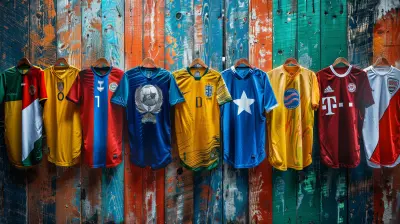
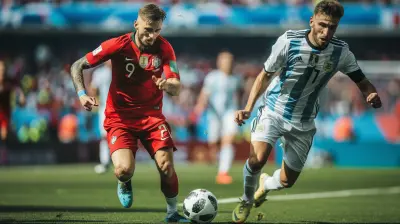
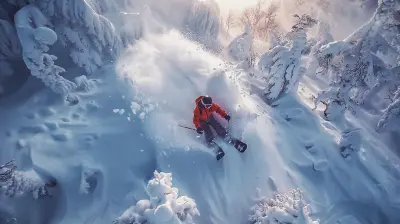
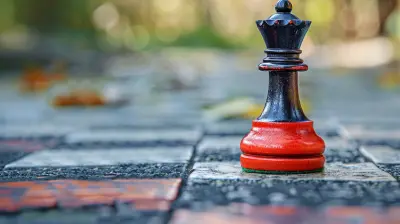
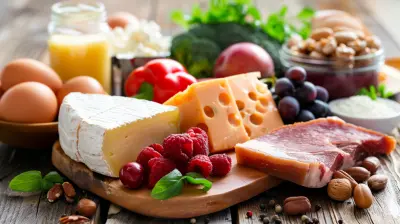


Scout Kirkland
The article effectively highlights the complexities of knee injuries in sports, yet it could delve deeper into the psychological impact on athletes, as mental resilience is crucial for recovery and prevention.
April 8, 2025 at 3:53 AM